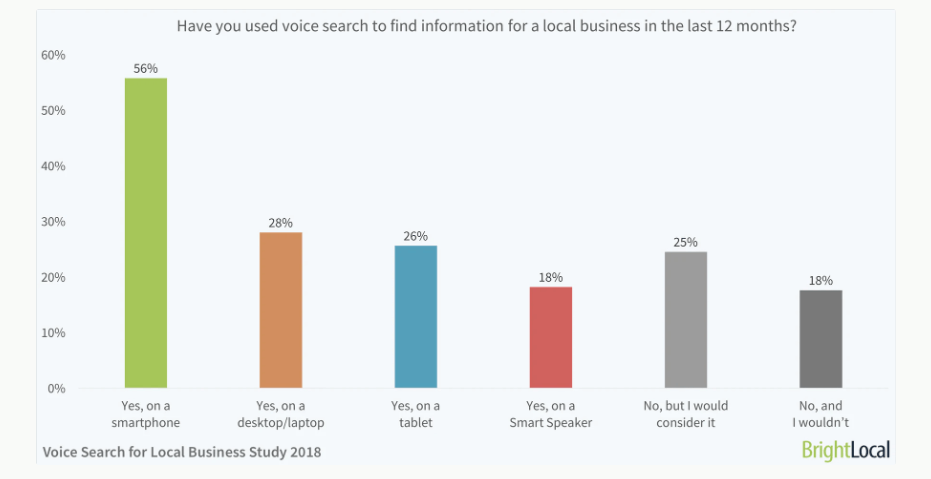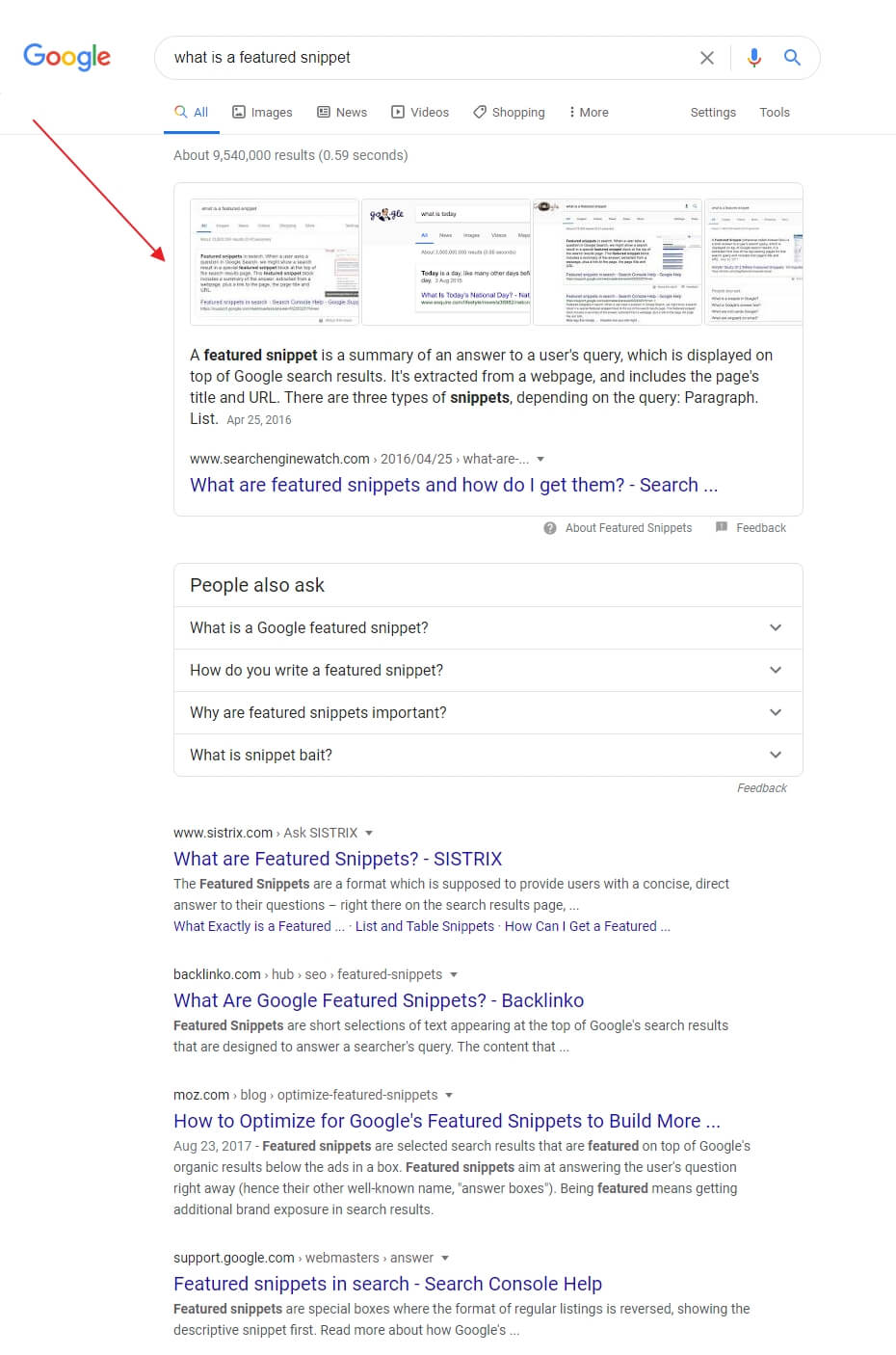[:en _i=”0″ _address=”0″ /]
The world of Search Engine Optimization (SEO) is an ever-changing one. No matter if you run a small location-based landscaping business or have a franchise of restaurants all around the country, any change in the way clients search for services online affects you.
If they change the way they look for you, you need to change how you speak to them.
Speak is the operative keyword here.
People no longer just type their searches on Google. With the help of Siri, Alexa, and other voice assistants, it is easier than ever to use voice search. Unsurprisingly, that is drastically changing the SEO landscape. Here is what you need to know and how to adapt to these changes so you can rank for voice search queries on Google, too.
What Is Voice Search and Why It Matters in 2022
Look around you. Everyone is always in a hurry to get somewhere. Today is all about optimizing our time and effort, doing things faster and easier. One of those things is online searches.
We can’t escape asking Google about local plumbers and grocery stores, as well as tips on how to run our businesses better, but there is one thing we can do. We can ask our questions without even typing them. It is asking Siri about the weather. It is making Alexa play your favorite song.
In other words, voice search is a way of searching for information online through speech instead of images and the traditional typing method.
Voice Search in 2022
The voice search industry is booming, and there is no second opinion on that. In fact, according to eMarketer, voice commerce sales reached a massive $2.1 billion in 2019 alone. Despite the logistics challenges of the pandemic, that number only grew in 2020 and 2021. Juniper Research estimates that by 2023, there will be an astounding 8 billion digital voice assistants already in use on the market.
So, Why Is Voice Search So Popular?
It is literally everywhere.
If you look inside your pocket or on your desk right now, it is likely that you will find a voice search device. It’s your phone, your tablet, your Alexa. One of the main reasons why voice search is so popular nowadays is because it is part of almost every device we use in our everyday lives. This means that voice search is super easy to access wherever you are.
Some of the most popular voice search devices (and the respective search engines they use) today are:
- Alexa and Amazon Echo (Bing)
- Apple’s Siri (Safari)
- Google Home (Google)
- Google Assistant (Google)
- Microsoft Cortana (Bing)
- Samsung Bixby (Google)
Although the market is getting more and more saturated with smart speaker providers, Amazon continues to dominate the voice-enabled device market (more than 26% of global sales). That is largely due to the fact that Alexa is still the only voice assistant that allows people to directly buy products using their voice.
However, it is Google that holds the majority of the search engine market. As of December 2021, the search engine holds almost 92% of the global market share (both on mobile and desktop devices).
Back in 2013, Google released the Hummingbird update, which introduced a change in how the algorithm processed natural language versus keywords. The update took into consideration context and user intent, which is an integral part of how the algorithm works today.
With search engines and voice recognition software growing increasingly smarter regarding voice search queries, websites need to quickly adapt and optimize their content accordingly. More on that later.
Voice Search Statistics
In case you still have your reservations about voice search being the future of online searches, here are some statistics that may change your mind, especially as a small business owner:
- 1 in every 5 Google searches on mobile are voice searches (Search Engine Land)
- In 2020 alone, 50% of all searches were voice-based (Campaign)
- 46% of users use voice search every day to find local business information (BrightLocal)
- 58% of consumers perform “near me” searches to find local businesses using voice search (SEO Expert Brad)
- 3 out of every 4 smart speaker owners use voice search to find local businesses at least once a week (Search Engine Land)
- 28% of consumers contact a business after doing a voice search (BrightLocal)
- 43% of people use voice search because it’s faster (Go-Gulf)
How Voice Search Came to Be
If you own an iPhone, you are well familiar with Siri, and you have most probably heard about Amazon’s Alexa, Google Assistant, Microsoft Cortana, and other similar voice assistants.
In fact, voice recognition software started way before the age of voice assistants. It has been around since the 1960s, but it wasn’t until the likes of Siri came into play that it really gained popularity.
Brief History of Voice Search
Google first launched its Voice Search feature in 2010. The system was slow to catch on because it required users to first call a telephone number, say their search query, and then wait for results to show on their mobile device.
Then came 2011 when Apple introduced Siri for their iPhone 4s, making it the first digital virtual assistant. A year later, Google launched Google Now, and Amazon and Microsoft quickly caught up with Alexa and Cortana. In 2016, Google released Google Assistant, and a couple of years after that, Samsung’s Bixby and IBM’s Watson also reached the market.
In the present day, virtual assistants are everywhere – from laptops and mobile phones to watches and home devices. Most people have used a virtual assistant at least once, and some aren’t even aware of it.
The Introduction of LaMDa
It is not just devices that are getting smarter, though. Google has long pledged its desire to accommodate all types of searching, including voice-operated ones. In fact, in May 2021, Google announced its latest voice search-related update, called LaMDA.
LaMDA stands for Language Model for Dialogue Applications, and its goal is to offer a conversational model of browsing for users. It uses AI to offer more relevant search results drawing from audio, visual, and text-based formats. LaMDA is still in testing, but the results look promising. We have summarized the key aspects of LaMDA and other SEO trends in a separate blog.
Start Optimizing for Voice Search Today
Are you convinced voice search is and will continue to be a hot topic in digital marketing? Good. Now, it’s time to see how you can start adapting your voice search SEO strategy today.
#1 Use Natural Language
Spoken queries aren’t the same as typed ones.
Let’s look at a possible situation, so you can understand the difference yourself.
Let’s say you’re looking for a nice cocktail place in your area to celebrate your birthday. If you go on Google or another search engine, your written query might be something along the lines of “best bars near me.” Now, if you’re using a voice assistant on your mobile phone, your query might sound more like this: “what are the best bars in my area?”
As you can see, spoken queries tend to be longer and more conversational. So, instead of optimizing your content for keywords, you need to focus on enriching your content with conversational keywords and phrases that are used more in conversation rather than spoken word. Optimizing for semantic search is key to having a successful voice search optimization strategy. Targeting long-tail keywords is not only great for voice search but also an efficient strategy for traditional SEO as well.
#2 Include Question Phrases In Your Content
When we type in our queries on Google, we usually try to be as succinct as possible. It’s not about writing a novel out of your request, but saying as much as you can with as little as possible.
For example, if you’re looking for a pink bridesmaid dress under $50, you will type something like: “pink bridesmaid dress on sale.” But, a spoken query will sound more like: “Where can I find a pink bridesmaid dress under 50 dollars?”
So, when you’re creating your content, think about these types of questions users will potentially have about your product or service. Include these questions in your headers and subtitles, as well as the individual paragraphs. Don’t overdo it, of course. Balance is key. Look at those questions like longtail keywords and use them strategically and wisely.
If you’re wondering how to come up with such questions, there are many tools that are free to use (or have freemium options), such as Answer the Public and Also Asked.
If we take the example from #1 about bars, here is what people are already asking Google when they want to find a bar in their area:
A question about pink bridesmaid dresses, using Also Asked, will show results like these:
Use these free tools when preparing or editing your existing content. Doing that can only benefit you. Use the questions in the results and don’t be afraid to use alterations to avoid repetition. Search engines have gotten increasingly savvy at understanding semantics.
#3 Try to Get a Featured Snippet
You’ve surely seen featured snippets before, but you just didn’t know that was what they were called. These are the pieces of content that take up position zero, a.k.a., the space before any organic search results. According to Search Engine Watch, if your content is selected for a particular query, it is likely that voice assistants are going to use it to respond to spoken queries as well.
So, the burning question of the day: how to make sure your content makes it to the Featured Snippet section? The simple answer is: make sure your content is original, answers the particular question of the query, and is of high quality. If you’re looking for a more thorough answer, you can check this guide by Ahrefs. The most important aspect to consider, however, is the type of snippet you want to rank for as this will help you structure the page and content better.
#4 Work to Improve Your Local SEO
A study made in 2018 by BrightLocal found that over 58% of people use voice search to find local businesses. It also established that users are more likely to use voice search to look for additional information on businesses they are already familiar with. This comes as no surprise since most people who go for voice search are already planning to go somewhere or do something. They aren’t in the initial stages of researching a topic or a company.
Since statistics show that more than half of consumers use voice search to perform local searches, improving your local SEO strategy is key. From targeting geo-specific keywords to updating your content, you have a lot to do. Check this guide to help you ace your Local SEO strategy this year.
The phrase “near me” is super popular in voice search, and since search engine bots look into business listings to find verified information, you need to make sure your Google My Business profile is thoroughly filled out and has the latest details of your company.
#5 Keep Your NAP Consistent Everywhere
For location-based results, each voice assistant pulls NAP information from different, sometimes overlapping sources. Keep that in mind and be sure to have your NAP consistent everywhere.
For example, Apple’s Siri pulls local recommendations from the NAP profiles on Trip Advisor, Apple Maps, Yelp, and Bing, while Android devices and Google Assistant pull that information from Google My Business. As you can see, most voice assistants rely on their “owner’s” tools and metrics to deliver information, and the best you can do is have a uniform NAP everywhere.
The Bottom Line
Working on improving your voice search SEO game is not something you can do “when you get the time.” Optimizing for voice search on Google and other search engines is a necessity for virtually any business if it is to remain competitive.
Since many are still slow to see the importance of optimizing their content for spoken queries, you will have an added edge as soon as you take our advice and start improving your SEO strategy. Strategic planning, understanding user intent, and quality content are the three must-have ingredients if you want to master voice search in 2022 and beyond.
Refer back to this blog as we will be updating it with new trends and tips while we continue to see new changes in how voice search evolves.
—————————————————————————————————————————————————————————————————————————————————










